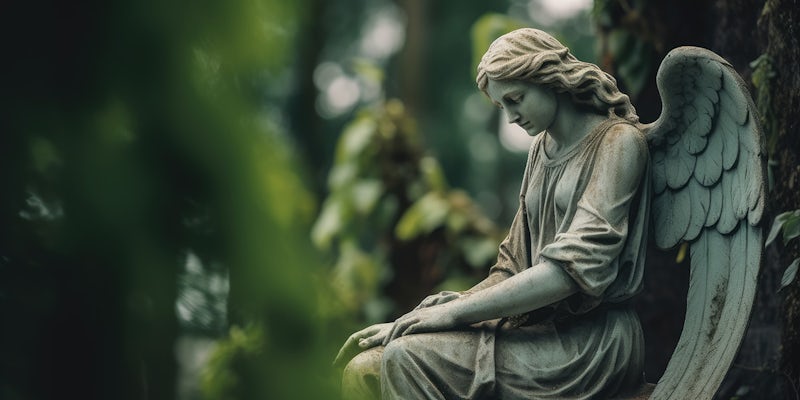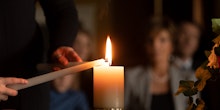Cemetery Symbolism
As one of the largest non-profit cemeteries in the U.S., Spring Grove is home to a variety of graves and monuments. Throughout our grounds, there are many motifs on display, some signifying the deceased’s spiritual faith, family background, or cultural heritage. Since our country’s inception, mourners have decorated graves and monuments with a variety of designs. Understanding the symbolism behind them can be enriching and inspiring when designing a loved one’s memorial or preplanning a funeral.
Early American Cemetery Symbols
A skull with wings, known as the death’s head, is a common motif in New England and can be seen at the top of many upright graves of the area’s earliest colonists. The image of an hourglass, bones, or a coffin occasionally accompanies the skull. During the 18th century and into the 19th, cherubs were a popular choice for funerary art. These winged effigies represented the soul of the deceased and sometimes featured individualized elements of portraiture, reflecting the physical characteristics of the person being honored.
Larger Monuments and Their Meanings
As our nation grew, so did our monuments. In many cases, obelisks, statues, and columns replaced the simple and uniform upright monument. These larger monuments integrated nature and the surrounding landscape of the cemetery. In Ancient Egypt, the obelisk symbolized strength and devotion to the sun god, Ra, the creative generator of all things. The angel is one of the most common memorial statues, and depending on the position of the figure, it can symbolize different things. A praying angel with folded hands can signify spirituality or devotion to God. An angel with its hands or a finger pointing skyward may represent the soul’s journey to heaven or an afterlife.
Other Common Cemetery Symbols
Weeping willows are another popular monument motif and fittingly, they symbolize grief and mourning. They are most often depicted at the center top of an upright monument. The urn is an ancient and commonly used cemetery monument believed to symbolize immortality. It is often seen draped in fabric and placed atop a mausoleum or tomb. The urn has come to be associated with death and the afterlife because of the popularity of cremation in classical times, when it was more popular than burial. The laurel wreath is another ancient symbol often seen at the top of an upright monument. Placed on the heads of early Olympians, the laurel wreath symbolizes victory and eternal life.
If you live in Hamilton County and would like to learn more about our cemetery or arrange a time to visit our beautiful grounds, please contact our staff.

.jpg?ar=2&auto=format&cm=origin&crop=faces%2Cfocalpoint&dpr&fit=crop&h=110&q=80)

